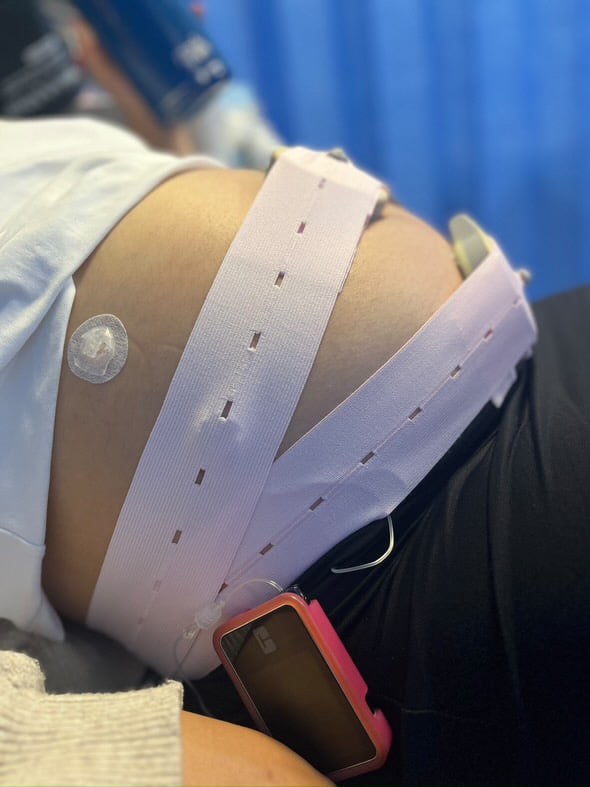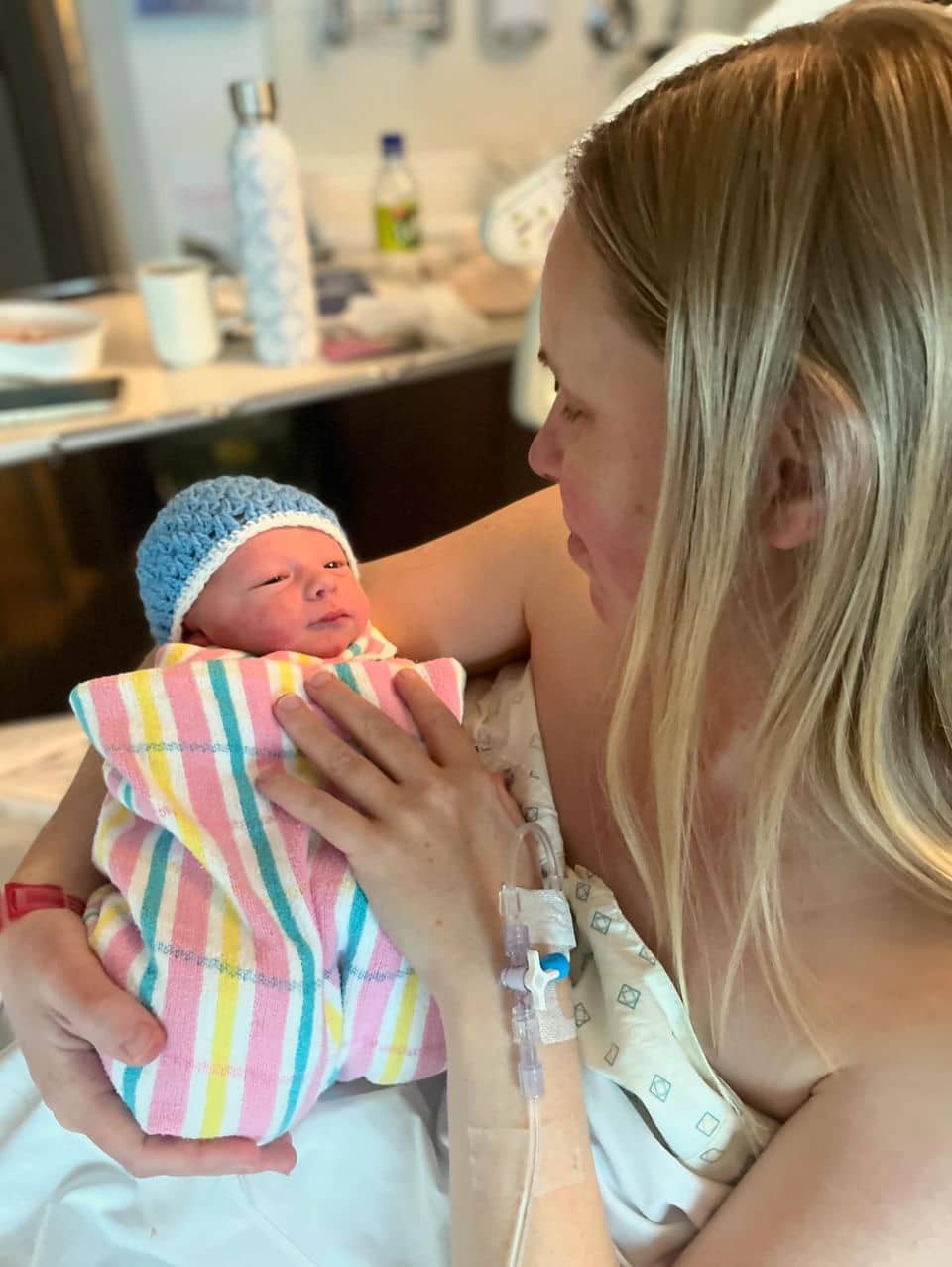Pregnancy Your Pregnancy Care Options
Your Pregnancy Care Options

If you’re not sure whether to choose a midwife or an obstetrician for your pregnancy care, you’ve come to the right place. Here we outline what your options are, including the difference between a midwife and obstetrician and what you can expect from your care experience.
Public Hospitals
In Australia, 96 percent of women choose to birth their babies in the hospital system, with three-quarters accessing care through public hospitals. If you have a medicare card, you won’t pay a cent for your pregnancy, birth or postpartum care in the public hospital system regardless of whether you see obstetricians or midwives or if you have a vaginal or caesarean birth.
Public hospitals vary quite significantly in the care services they provide so we highly recommend you looking into your local hospital and its options. Very generally speaking, these options are commonly available:
Clinic Care:
This is where you see a different midwife at every appointment during pregnancy. When you’re in labour, you’ll be cared for by the midwife on staff at the time. This is called a “fragmented” model of care because you don’t see the same midwife at every appointment. For some women who are assigned this care model, they find it helpful to work with a student midwife or a doula so that have a continuity of care experience and know that they’ll have a familiar face on the day of their labour and birth.
Caseload Midwifery:
Also known as continuity of care, this is where one midwife (and their backup midwife) cares for you during pregnancy, is present at your birth and will visit you at home in the first 10 days post-birth.
Midwifery Group Practice:
Available in public hospitals and adjoining birth centres, this is where you have ongoing care with a team of midwives. In some hospitals, this model of care allows you to have continuity of care with one midwife within the team.
High-risk Care:
If you have a pre-existing medical condition, you develop pregnancy concerns, if you’re having twins or triplets or if you’re considered high-risk, you will be cared for by a team of obstetricians, midwives and health professionals who specialise in high-risk pregnancies and births.
Tip : If you want a one-on-one midwife the best question to ask your local hospital is what care option allows me to have continuity of care with a known midwife? Once you know the name of this care model, ask your GP to send you a referral letter and email/call your local hospital advocating for your preferences.
Private Hospitals
If you want continuity of care with an obstetrician, you will go to a private hospital. The first step? Choose an obstetrician who works out of a private hospital near you; most have their own websites which detail their background, ethos and if they specialise in particular birth options (eg: maternal-assisted caesarean). Your health fund will subsidise your care if you’ve had obstetric cover for over 12 months. If you don’t have this you can expect to pay close to $10,000 for your pregnancy and birth care but this can vary quite significantly depending on your birth and postnatal needs. Some private obstetricians offer their services in the public system which means you will pay for your pregnancy care privately but your birth costs will be covered by the public hospital (you’ll need to call the obstetrician’s office to enquire about this option).
What’s the difference between an obstetrician and a midwife?
Generally speaking, midwives are experts in physiological (normal, vaginal) birth but they also observe and assist all kinds of births, from vaginal births without intervention to induced labours, instrumental births and caesarean births. Regardless of where you’re birthing and how you’re birthing, you can guarantee that you’ll be cared for and supported by a midwife during labour and birth.
An obstetrician is a specialist in pregnancy and birth complications, hence they bring a specialised, medical perspective to birth. If you require an instrumental birth (forceps or vacuum) or a caesarean birth, you’ll be cared for by an obstetrician.
It’s important to note that many obstetricians also specialise in low-risk birth and will support you to have a low-intervention vaginal birth. There are also a growing number of obstetricians who support women through high-risk births without intervention (eg. vaginal breech birth and twin birth without epidural) and are prioritising woman-centred care, even in the operating theatre, because they know that when a birthing woman can make choices for herself, she’s more likely to have a positive experience.
Homebirth
Homebirth is largely supported by private/independent midwives although a few public hospitals offer this service, too. It’s only available to women with low-risk pregnancies although what is deemed low-risk can differ from one midwife to the next. If you’re accessing a home birth program through a public hospital, you can expect very strict hospital policies regarding your low-risk status.
If you want more detail, including birth statistics from Australian public and private hospitals, we’ve outlined everything you need to know in our new book, THE COMPLETE AUSTRALIAN GUIDE TO PREGNANCY AND BIRTH; a comprehensive, encouraging and educational companion that will take you through the three trimesters of pregnancy, through labour and birth and into early postpartum. Order it HERE.
You may also like to read: You’re Pregnant! What Comes Next?
Categories
Related Products
-
Welcome to the First Trimester
11 reviews$67.00An informative and comforting 5-part audio course guiding you through the first 12 weeks of pregnancy.
Get your copy of our Perineal Massage Guide in your inbox
Keep Reading
We think you might enjoy these articles

The Emergency C-Section Checklist You’ll Be Thankful You Had

Pre-existing Diabetes and Pregnancy: What You Need to Know

Harnessing the Power of Acupressure: A Natural Approach to Preparing for Birth

Thoughtful Christmas Gifts for your Pregnant Friend.

What is Pre-eclampsia?

Non-invasive Prenatal Testing (NIPT)
@AustralianBirthStories
Follow along with us
@AustralianBirthStories
Follow along with us
@AustralianBirthStories
Follow along with us
@AustralianBirthStories
Follow along with us
@AustralianBirthStories
Follow along with us
@AustralianBirthStories
Follow along with us
@AustralianBirthStories
Follow along with us
@AustralianBirthStories
Follow along with us
@AustralianBirthStories
Follow along with us
@AustralianBirthStories
Follow along with us
@AustralianBirthStories
Follow along with us
@AustralianBirthStories
Follow along with us


